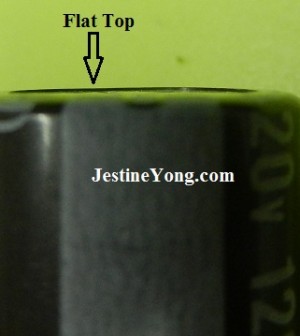Observe The Electrolytic Capacitor Carefully

Usually before I started to repair any electronics equipment I would usually scan through the components first. Many times you could locate the problem by looking at the appearance of the components. E-Caps can bulge, transistors can crack, diodes could split into two pieces, resistors could change color, PCB board could have dark patches and so on. On this particular power supply (complaint was no power) I thought I have scanned through the components but I didn’t realize that I have actually missed the big filter capacitor. The reason for it-the e-cap had a very slight bulge and if you did not see it properly you may have thought it was normal. Double confirmed by checking the e-cap with ESR meter proved that the e-caps was indeed bad (no value).
The moral of the story is if you want to really look at the components make sure that you see it properly. With one miss, it may take up your precious troubleshooting time where you could have actually solve it within minutes. Compare the photos below:
Please take note that a bad cap could also have a flat top. The best way to confirm is to use the ESR meter.
 (10)Dislikes
(10)Dislikes (1)
(1)







Simad
May 4, 2013 at 12:02 am
Hi Jestine, A rule of thumb is that,in average, a 6-7 years old e-cap has to be changed(lifespan matter).But how can you tell an e-cap age? what about a PCB age?
Jestine Yong
May 7, 2013 at 4:18 pm
Hi Simad,
You can tell by looking at the back of the equipment. Usually it will have the manufactured date printed.
Jestine
Waleed Rishmawi
May 7, 2013 at 3:41 pm
good tip..
I usually scan the board with my eyes and then do the voltage test on the main capacitor that will give me more confirmation about it if it is bad or not..
Jestine Yong
May 7, 2013 at 4:15 pm
Hi Waleed,
Thanks for the comment.
Jestine